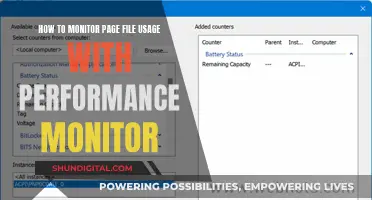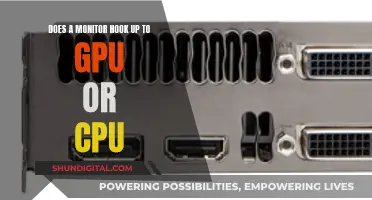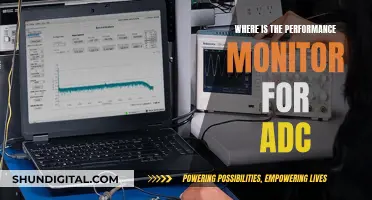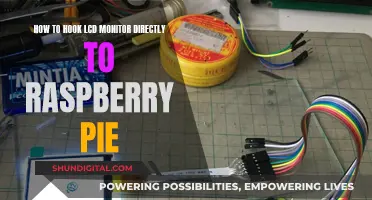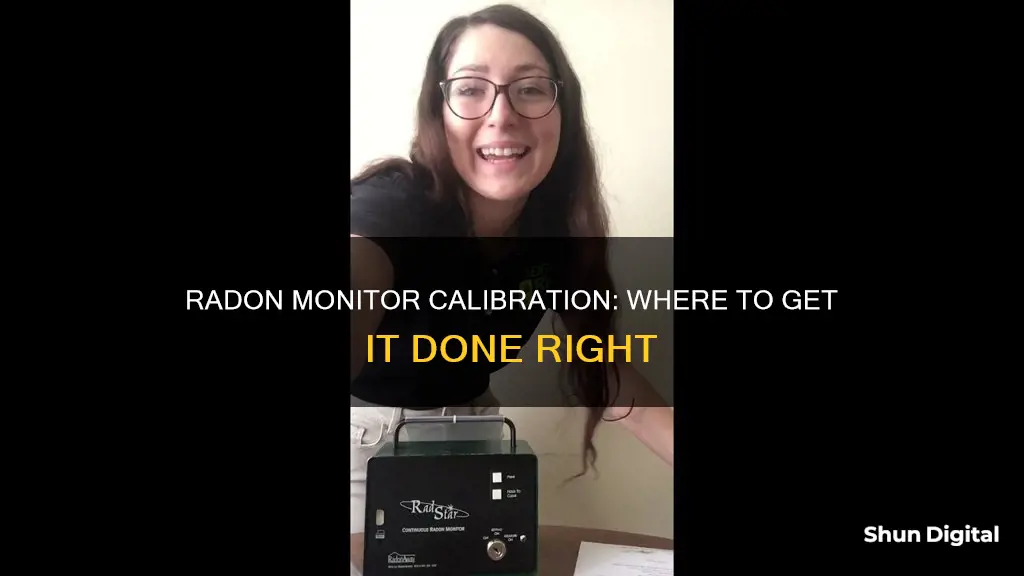
Radon is a colourless, odourless, and radioactive gas that can be found in homes and buildings. It is produced by the breakdown of uranium in water, rocks, and soil and can accumulate to dangerous levels if not properly monitored and mitigated. Calibration of radon monitors is essential to ensure accurate readings and maintain the safety of occupants. While some radon monitors are designed to be more affordable and accessible, they may not offer recalibration services, leading to potential inaccuracies in measurements over time. Professional-grade radon monitors, on the other hand, are more expensive but can be recalibrated through certified laboratories or national laboratories, ensuring their accuracy and reliability. This paragraph introduces the topic of radon monitor calibration, highlighting the importance of accurate radon detection and the options available for calibrating these devices.
| Characteristics | Values |
|---|---|
| Radon Monitor Calibration Cost | Upwards of $200 |
| Radon Monitor Calibration Frequency | Once every two years |
| Radon Monitor Calibration Time | 48 hours |
| Radon Monitor Calibration Companies | Bowser-Morner, KSU Radon Chamber, Radiation Safety Institute of Canada, Spruce Environmental Technologies, Radon Corporation of America, Rad Elec |
What You'll Learn

Radon monitor calibration services
National Radon Proficiency Program (NRPP):
The NRPP offers Device Performance Tests (DPTs) to certify professionals using analytical devices such as continuous monitors. The process involves shipping your device to an NRPP-approved test chamber, where it is exposed to a known radon concentration for at least 48 hours. You then receive the device back and analyse the data, reporting the results to the test chamber. They will compare your results to the actual radon concentration and provide a Performance Report detailing your accuracy. This report is crucial for initial certification and renewal with the NRPP.
NRPP-Approved Secondary Test Chambers:
There are several NRPP-approved secondary test chambers that offer calibration services, including:
- Bowser-Morner, Inc.
- KSU Radon Chamber
- Radiation Safety Institute of Canada
- Spruce Environmental Technologies (calibrations only)
Annual Device Calibrations:
Analytical test devices must be calibrated annually to maintain accuracy. The calibration is typically performed by the chamber operator or manufacturer, and a certificate of successful calibration must be submitted to the NRPP for each registered device. This process ensures that radon detection devices provide reliable results.
SunRADON Monitor Calibration:
SunRADON, a leader in radon detection, offers free annual calibration and repair services for its monitors. Their monitors are NRPP, C-NRPP, and NRSB certified, ensuring reliability and accuracy. SunRADON's services include remote monitoring, data access, and test report generation, providing peace of mind and saving valuable time and resources.
Professional Calibration Services:
Some companies, like Bowser-Morner and KSU, offer professional calibration services for pro-grade devices. These services can cost upwards of $200, but they ensure that your device maintains its accuracy and complies with certification requirements.
Guide to Buying Affordable Monitors: Quality on a Budget
You may want to see also

Radon monitor calibration cost
The cost of calibrating a radon monitor depends on the type of device you have. Homeowner-grade continuous radon monitors (hCRMs) are relatively new to the market and cannot be recalibrated. These devices can be purchased online for less than $150, and some rival the accuracy of professional-grade devices that are five to ten times the price. In contrast, professional-grade CRMs cost $750 or more and must be recertified at a national laboratory, such as Bowser-Morner or KSU, at least once every two years. This calibration process can cost upwards of $200.
It is important to note that the cost of calibration may vary depending on the specific model of the radon monitor, the location of the calibration service, and the qualifications of the technician performing the calibration. Some companies, such as SunRADON, offer free annual calibration and repair services for their monitors.
For those who own an hCRM, there is currently no known recalibration program available. As a result, when an hCRM "goes out of whack," the only option is to purchase a new device. This has raised concerns about the sustainability of these products, as they cannot be recalibrated and may end up in landfills.
To ensure the accuracy of radon monitors, it is recommended to have an NRPP-certified professional test and service the system every two years, as advised by the US EPA. This typically involves placing a short-term test kit next to the monitor and comparing the results with the lab results from a mail-in test kit. If the results differ drastically, it may be time to replace the monitor.
Widescreen Monitor Sizes: Understanding the Standard Dimensions
You may want to see also

Radon monitor calibration turnaround time
Radon monitor calibration is an important process to ensure the accuracy of radon detection. While homeowner-grade continuous radon monitors (hCRMs) cannot be recalibrated, pro-grade devices must be certified at least once every two years. This process typically involves sending the device to a national laboratory, such as Bowser-Morner or KSU, for calibration. The calibration process can cost upwards of $200 and offers valuable peace of mind.
The turnaround time for radon monitor calibration can vary depending on the service provider. Some companies offer expedited services, claiming to have the fastest turnaround times in the industry. For example, Radon Corporation of America boasts a one-week turnaround time, with 48 hours of exposure in their Radon Chamber. This quick service ensures that customers can have their radon monitors calibrated and back in their hands within a short timeframe.
It is worth noting that the calibration process itself typically only takes a couple of days. The device is exposed to a known radon concentration for at least 48 hours, as outlined in the Device Performance Test (DPT) requirements. This exposure period ensures that the device can accurately detect and measure radon gas levels.
To maintain certification, professionals using analytical devices for radon detection must calibrate their equipment annually. This involves submitting proof of calibration to the National Radon Proficiency Program (NRPP) and ensuring that the device is serviced and functioning correctly. The calibration date then becomes the anniversary date for future calibrations, helping users stay on top of their device maintenance.
Uncover the True HDR10 Monitor Experience: What to Look For
You may want to see also

Radon monitor calibration frequency
Radon monitor calibration is an important process to ensure the accuracy of radon detection. While the calibration frequency may vary depending on the device and its usage, here are some general guidelines and recommendations for radon monitor calibration:
Homeowner-Grade Continuous Radon Monitors (hCRMs):
HCRMs are relatively new, affordable devices that can be purchased for less than $150. However, one of the drawbacks of hCRMs is that they cannot be recalibrated. Most hCRMs come with a standard one-year warranty, but their accuracy may decline over time. To maintain accuracy, it is recommended to have an NRPP-certified professional test and service your hCRM every two years, as suggested by the US EPA. Additionally, comparing the readings from your hCRM with a short-term test kit during the winter can help identify any discrepancies that may indicate the need for a replacement.
Professional-Grade Continuous Radon Monitors (CRMs):
Unlike hCRMs, professional-grade CRMs can be recalibrated. These devices often cost $750 or more and offer greater accuracy and reliability. To maintain their certification, pro-grade devices must be recertified and recalibrated at least once every two years. This process typically involves sending the device to a national laboratory, such as Bowser-Morner or KSU, for calibration and certification. The cost of calibration can be upwards of $200.
National Radon Proficiency Program (NRPP) Requirements:
For certified professionals utilizing analytical devices, such as continuous monitors or electrets with readers, a Device Performance Test (DPT) must be completed prior to initial certification. This test involves exposing the device to a known radon concentration in an NRPP-approved chamber facility for at least 48 hours. The results are then analyzed and compared to the actual radon concentration, and a Performance Report is generated. This report must be submitted to NRPP as part of the initial certification process.
To maintain certification, annual device calibrations are required for each analytical test device registered with NRPP. The calibration must be performed by a chamber operator or the manufacturer, and a certificate of successful calibration must be submitted to NRPP. The calibration date will serve as the anniversary for future calibrations.
Guide to Connecting Monitors to Patchbay Efficiently
You may want to see also

Radon monitor calibration form
This form is to be completed by the radon monitor owner/operator when requesting calibration services. Please fill out all sections of the form to ensure efficient and accurate calibration of your device.
Section 1: Owner/Operator Information
- Name: [Name]
- Address: [Address]
- Phone Number: [Phone Number]
- Email: [Email]
Section 2: Radon Monitor Information
- Make and Model of Monitor: [Monitor Information]
- Date of Purchase: [Date]
- Is this your first time calibrating this device? Yes/No
- If no, please provide details of previous calibrations (date, facility name, etc.): [Details]
Section 3: Calibration Request
- Please describe the reason for your calibration request. For example, is it a routine calibration or are you experiencing any issues with the device? [Reason]
- Have you noticed any issues or abnormalities with the device? If yes, please provide details. [Details]
Section 4: Testing Facility Preferences
- Please select your preferred NRPP-approved testing facility from the following options: Bowser-Morner, KSU Radon Chamber, Radiation Safety Institute of Canada, Spruce Environmental Technologies.
- Alternatively, you can choose to have the calibration performed by the manufacturer of your device.
Section 5: Additional Information
Please provide any other relevant information or comments here: [Additional Information]
Please note that it is recommended to have your radon monitor calibrated at least once every two years to ensure accurate and reliable results. The cost of calibration can vary but can be upwards of $200. Some companies offer free annual calibration services with the purchase of their monitors.
Watching Antenna TV: Studio Monitor Setup Guide
You may want to see also
Frequently asked questions
It is recommended that you calibrate your radon monitor at least once a year.
Radon monitors that are not recalibrated may provide inaccurate readings.
You can compare the readings from your radon monitor with the results from a short-term test kit or a lab test kit. If the readings are drastically different, then it may be time to recalibrate or replace your radon monitor.
There are several organizations that offer radon monitor calibration services, including Radon Corporation of America, Rad Elec, Bowser-Morner, KSU Radon Chamber, and Radiation Safety Institute of Canada.
The cost of calibrating a radon monitor can vary depending on the service provider, but it typically ranges from $99 to upwards of $200.


